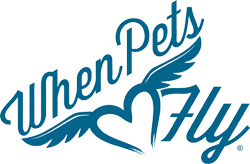Why Does My Pug or Frenchie Have a Hard Time Breathing?
Guest Article by Dr. Boaz Man, DVM, Medical Director at Boca Midtowne Animal Hospital
Brachycephalic Obstructive Airway Syndrome (BOAS) is a well-established condition that unfortunately has been historically overlooked. Abnormalities that contribute to this disease include an elongated soft palate, stenotic nares, a hypoplastic trachea, aberrant nasal turbinates, and everted laryngeal saccules (a condition which occurs secondary to the other abnormalities). Greater pressures are required during breathing, particularly during inspiration. Over time the increased negative airway pressure results in secondary changes & complications that make it difficult to breathe during exercise, stress, & heat.
Affected dogs may be unable to take deep or fast enough breaths to release carbon dioxide. This leads to distress & further increases respiratory rate & heart rate, creating a vicious cycle that can quickly lead to life-threatening situations such as pneumonia, bronchitis, hyperthermia, and collapse.
Why is vomiting and regurgitation associated with BOAS?
With high resistance in the airway aka negative air pressure, extreme effort is needed for brachycephalic dogs to expand their chest to increase airflow into the lungs. This extra strong expansion of the chest can cause stomach content or the stomach itself to be "sucked" into the chest, which often leads to vomiting and regurgitation. When acidic stomach content flows back into the esophagus it becomes irritated and inflamed and creates discomfort and heartburn. Another problem these brachycephalic pets suffer from is retention of food in the stomach for prolonged periods. Pooling of food in the stomach creates a sensation of nausea and again increases the potential for vomiting and acid reflux.
We must start by educating every brachycephalic pet parent about the symptoms of BOAS which signify an active problem and can include some or all of the following:
- Noisy breathing, open mouth breathing, panting, snoring, wheezing, grunting, squealing, snorting, regurgitation, exercise intolerance, gagging, choking, abdominal breathing, change in gum color
- Early and proactive surgical intervention should be discussed and scheduled
- Breeding of affected pets is unethical and affected pets should be spayed and neutered
How do we discuss the goals of BOAS surgery?
- The goals of BOAS surgery include improving daily breathing, reducing exercise intolerance, reducing secondary gastrointestinal diseases, and improving overall quality of life. Most important is that we can effectively reduce the risk of life-threatening complications such as aspiration pneumonia, hyperthermia, laryngeal paralysis, heart failure, and collapse.
How can veterinarians learn more about BOAS laser surgery in general practice?
Attending the yearly Veterinary Laser Surgery Symposium allows practitioners to get some hands on experience with surgical laser and listen to some interesting speakers who are familiar with the applications of laser surgery in general practice. This meeting also allows you to network with practitioners who are experts in surgical laser and find out how laser can be advantageous for your practice. If you are unable to attend the yearly symposium another option is to reach out to Vetscalpel representative.
Dr. Boaz Man, DVM
Medical Director
Boca Midtowne Animal Hospital
21073 Powerline Road Suite 27
Boca Raton, Fl 33433
Tel 561.218.2210
Sign up for travel news, updated regulations and advice to followers in our next Newsletter


